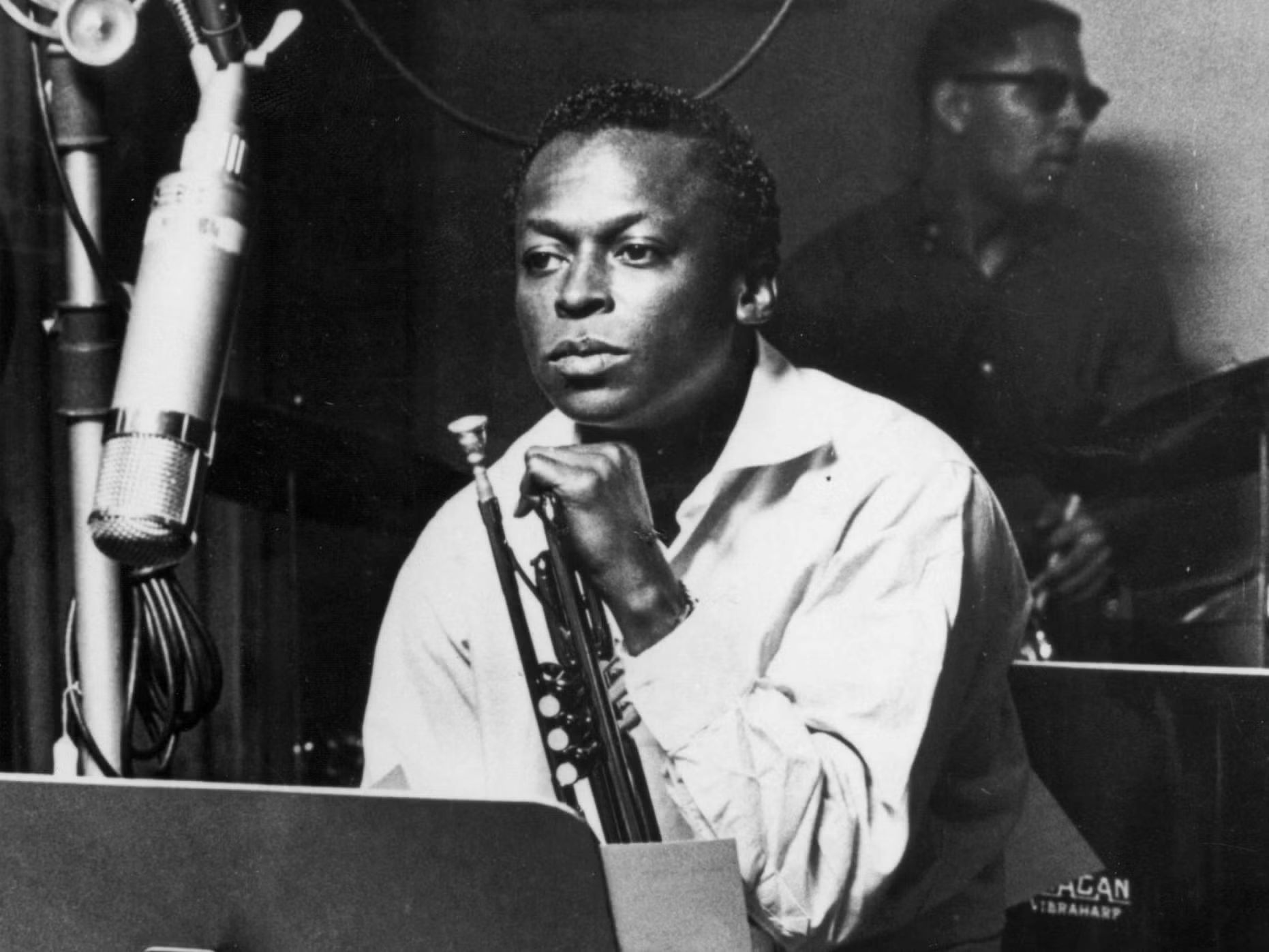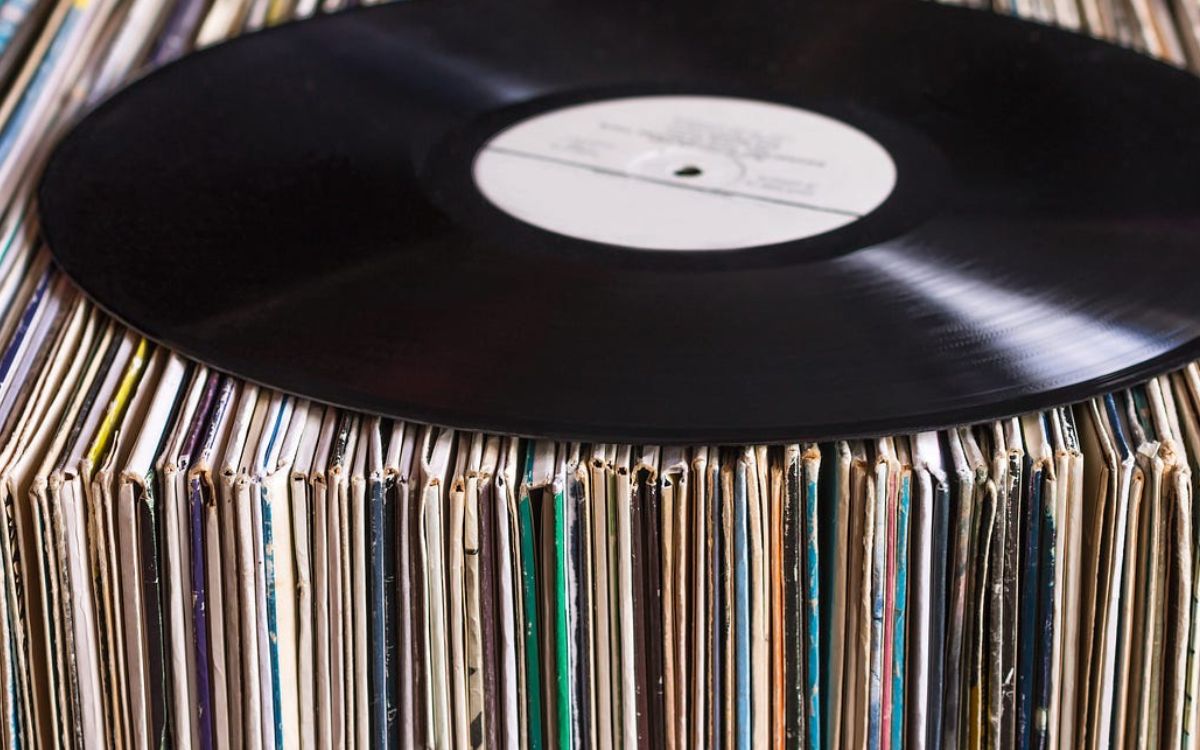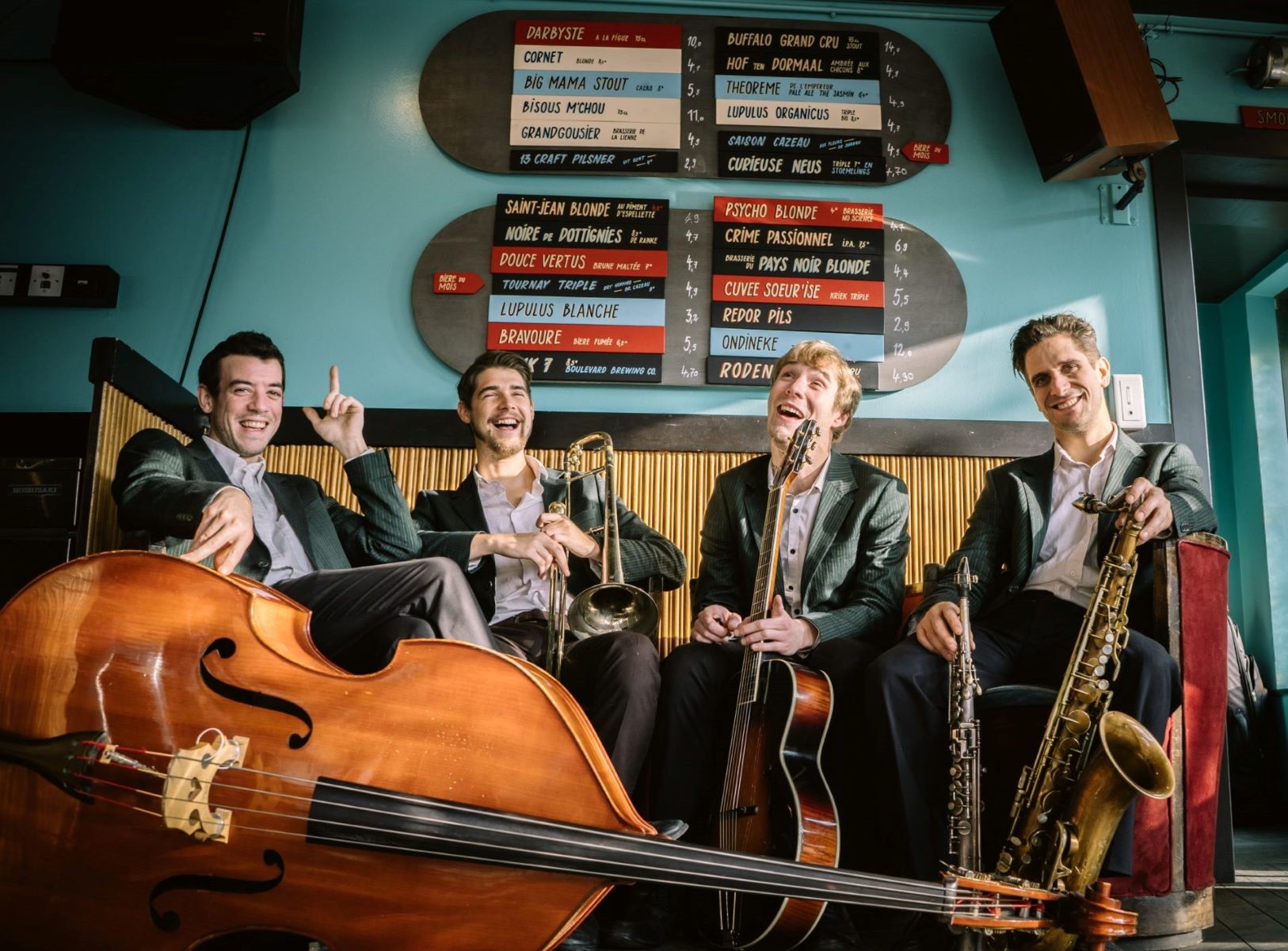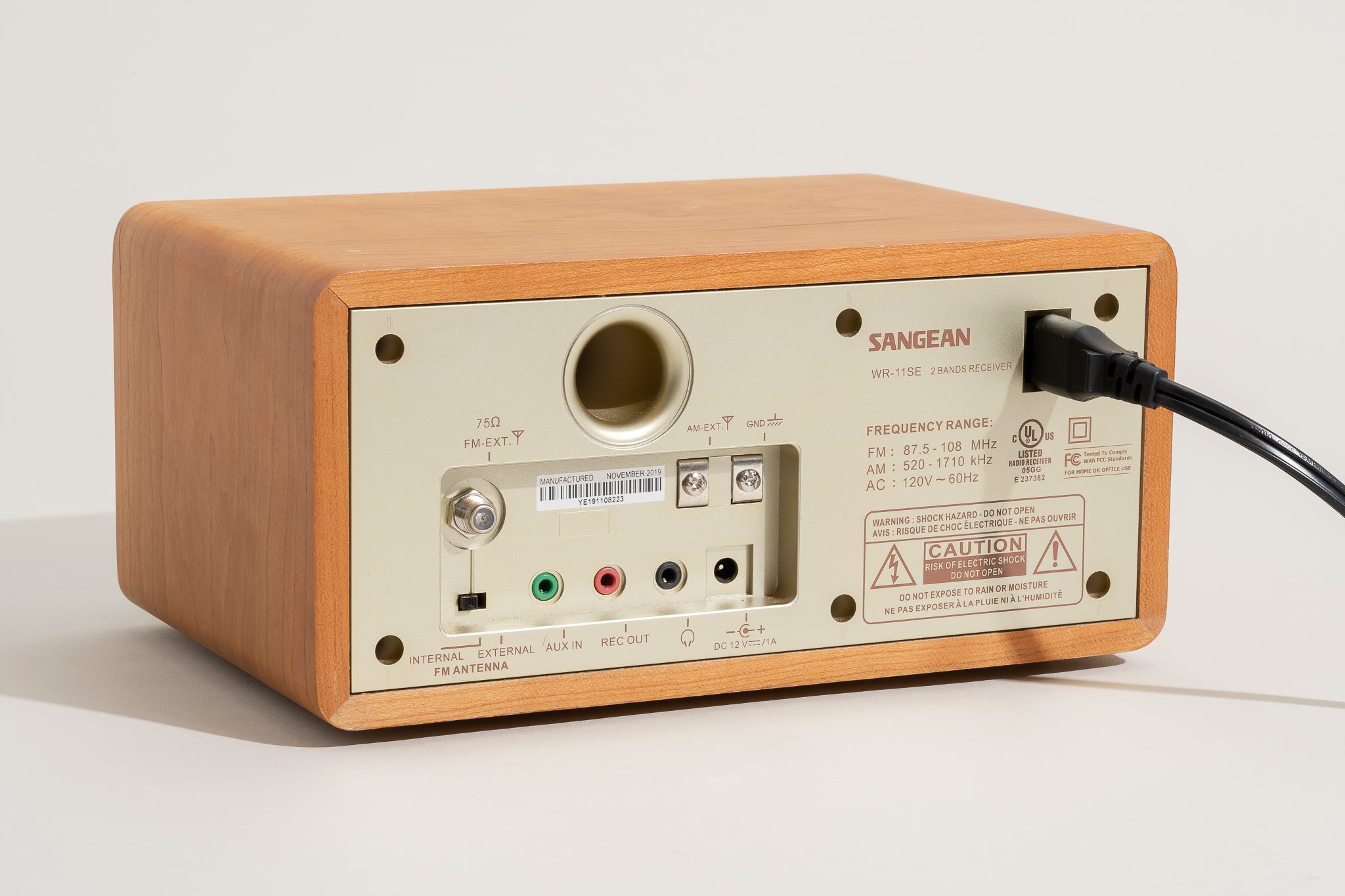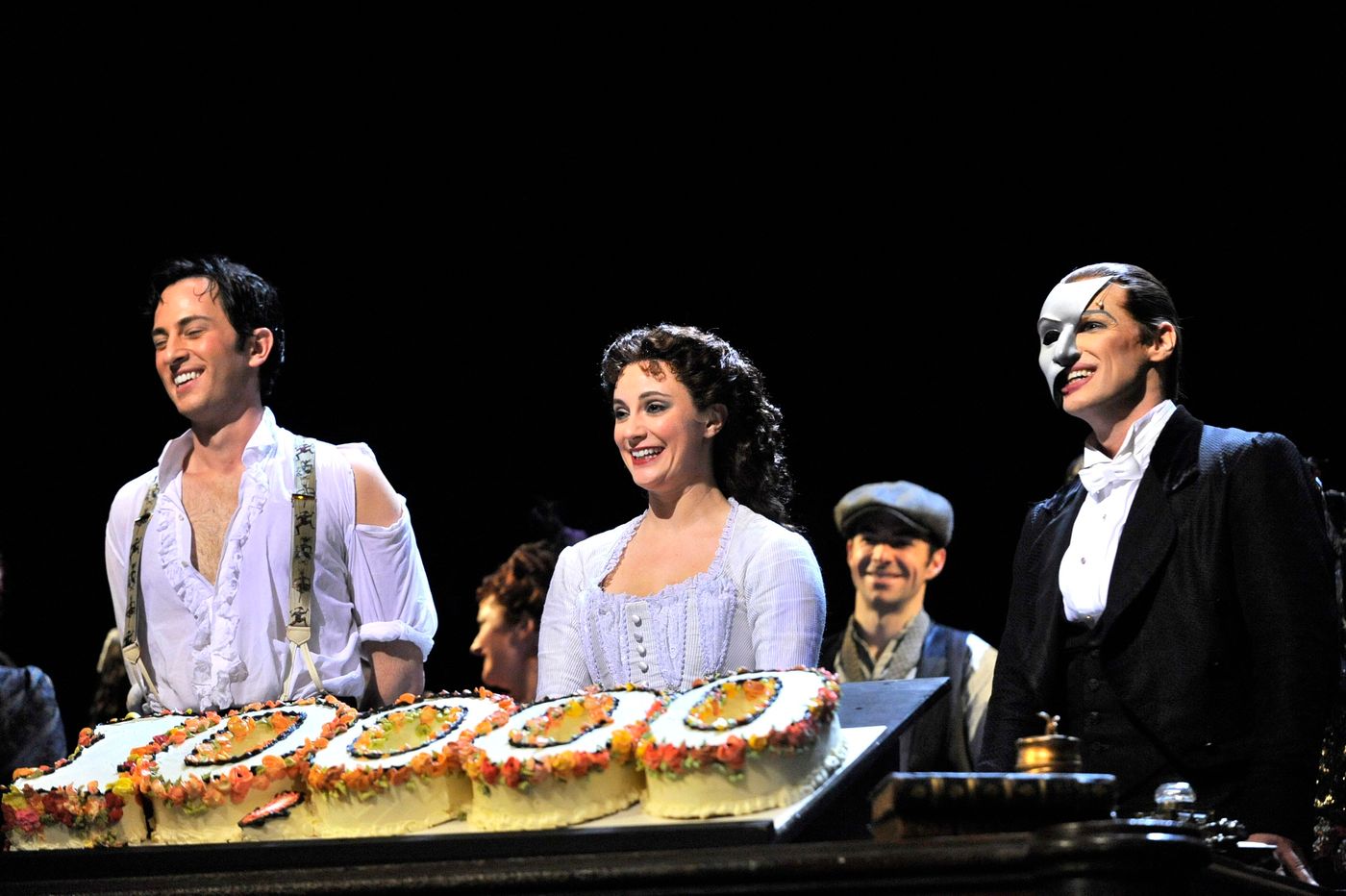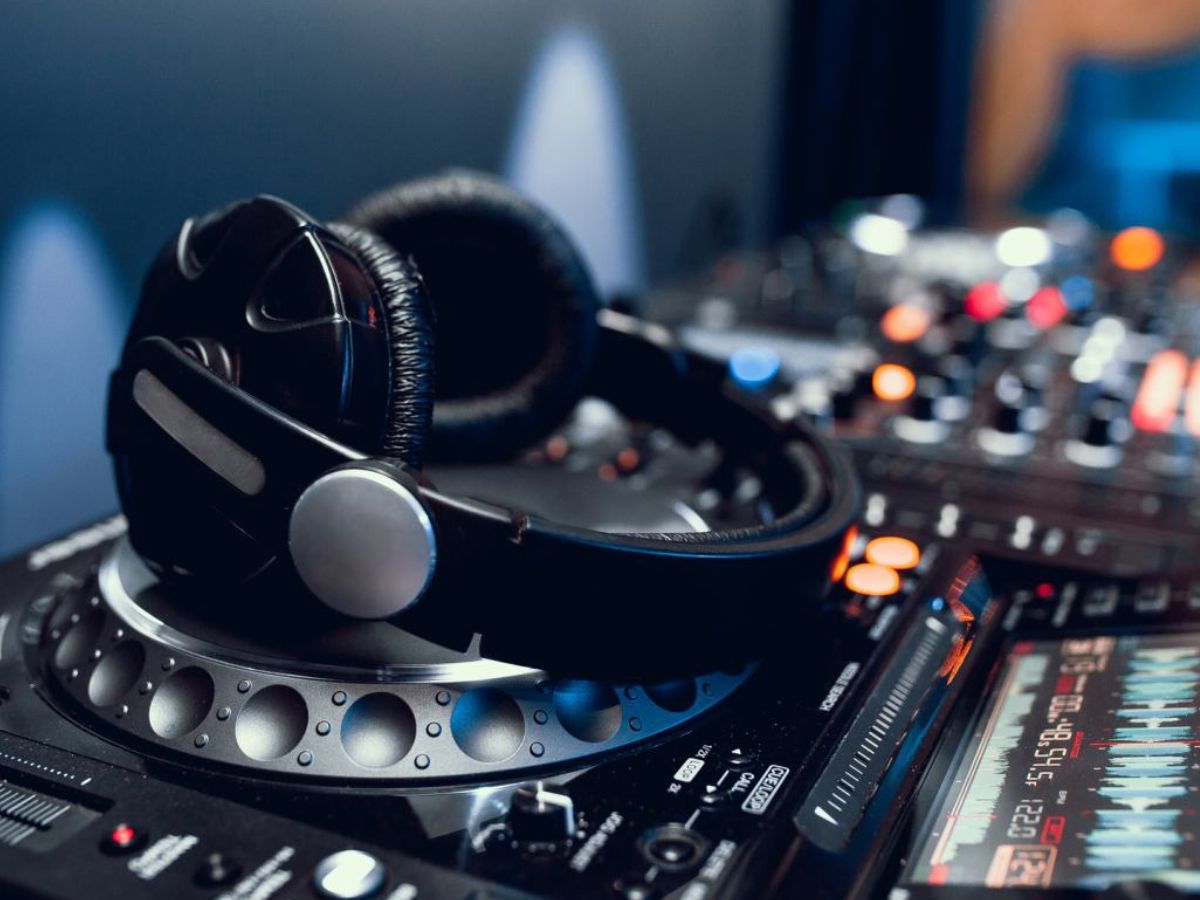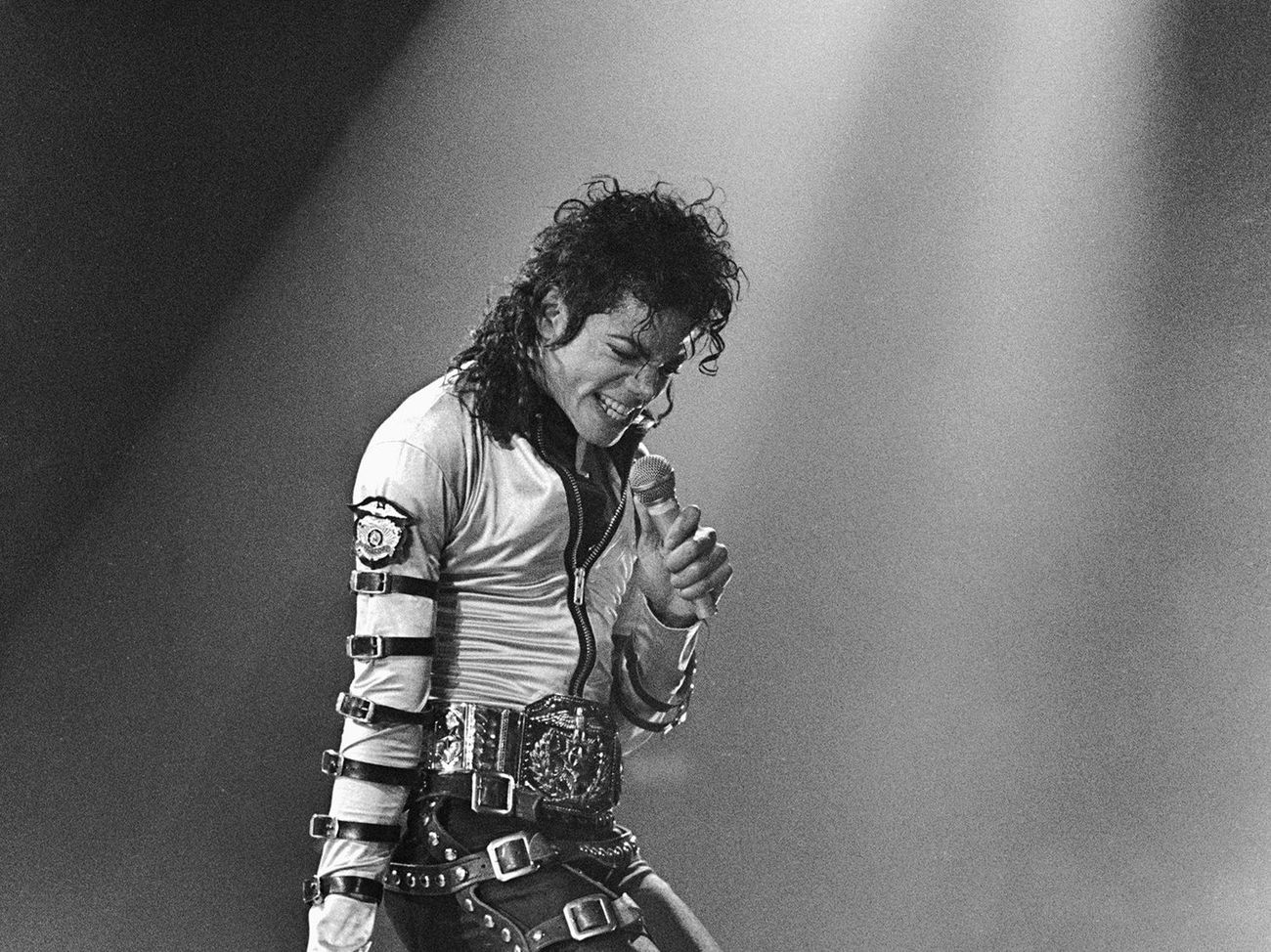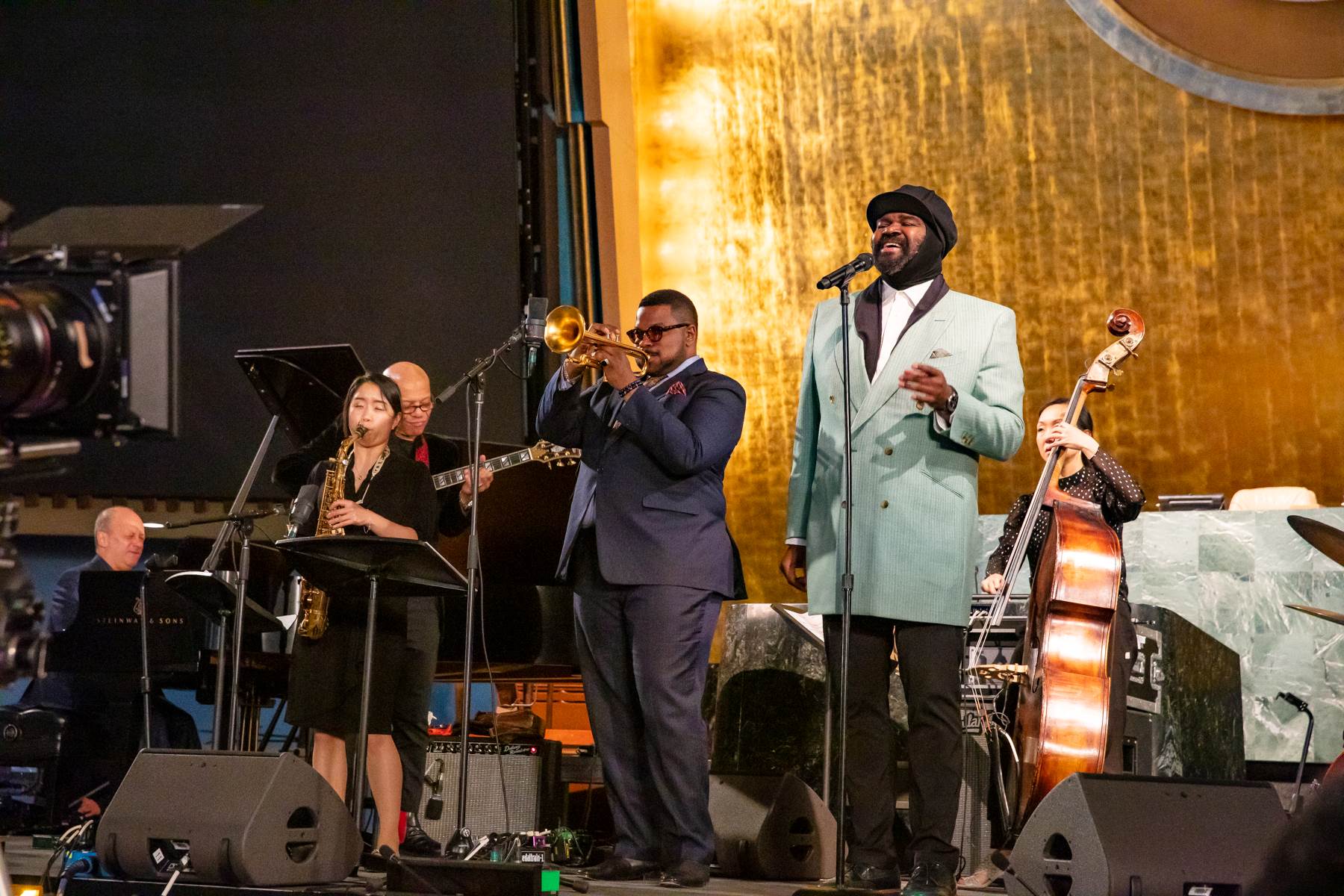

Jazz
Why Is Jazz So Important
Modified: February 18, 2024
Discover why jazz is crucial to music history and cultural diversity. Explore the rich heritage and influence of jazz in this insightful exploration.
(Many of the links in this article redirect to a specific reviewed product. Your purchase of these products through affiliate links helps to generate commission for AudioLover.com, at no extra cost. Learn more)
Table of Contents
Introduction
Jazz is a genre of music that originated in the early 20th century and has since become a cultural phenomenon. With its roots deeply embedded in African American communities, jazz has grown to encompass a wide range of styles and influences, captivating audiences around the world. From its humble beginnings in the jazz clubs of New Orleans to its evolution as an internationally recognized art form, jazz remains a significant and influential genre of music.
What sets jazz apart from other genres is its emphasis on improvisation and a distinctive swing rhythm. Jazz musicians have the ability to create and express themselves in the moment, showcasing their technical skills and musicality. This sense of spontaneity and collaboration between musicians is a hallmark of jazz music and contributes to its unique and captivating sound.
Throughout history, jazz has not only entertained, but also played a significant role in social change. During times of racial segregation and inequality, jazz became a voice for African Americans to express their experiences and aspirations. It became a symbol of resistance, unity, and the pursuit of freedom. Jazz continues to serve as a testament to the resilience and creativity of a marginalized community.
Furthermore, jazz has been a catalyst for innovation and integration with other musical styles. The genre has constantly evolved by incorporating elements from different cultures and musical traditions. From its fusion with Latin rhythms in the 1940s and 1950s to the incorporation of electronic instruments in jazz fusion, the genre continues to push boundaries and explore new possibilities.
Today, jazz remains an important part of our cultural heritage, captivating audiences with its expressive and dynamic performances. It continues to inspire new generations of musicians, providing a platform for artistic expression and pushing the boundaries of musical exploration. In this article, we will explore the historical origins of jazz, its cultural significance, its impact on music styles, its role in social change, its artistic qualities, its influence on improvisation and musicality, its connection to the African American identity, and its ability to foster international collaboration. Join us as we delve into the world of jazz and discover why it is such a vital and enduring art form.
Historical Origins of Jazz
Jazz has its roots in the African American communities of the early 20th century, particularly in New Orleans, Louisiana. It emerged as a fusion of various musical traditions, including African rhythms, European harmonies, and the blues. The cultural melting pot of New Orleans, with its diverse population and vibrant music scene, provided a fertile ground for the development of this new genre.
One of the key factors in the birth of jazz was the interaction between African American and Creole musicians. Creoles, who were of mixed African and European heritage, had access to formal musical training and were skilled in European classical music. African American artists, on the other hand, brought their African rhythms, call-and-response singing, and the expressive qualities of the blues. The collaboration and exchange between these two groups created a unique musical language that would come to define jazz.
Another important influence in the development of jazz was the brass band tradition. Brass bands were popular in New Orleans and played a mix of military marches, ragtime, and popular dance music. The syncopated rhythms and improvisational elements of these bands laid the foundation for the swinging and improvisatory nature of jazz.
As jazz spread beyond New Orleans, it underwent further transformations. In the 1920s, jazz bands began to form and travel extensively, particularly in Chicago and New York City. This era, known as the “Jazz Age” or the “Roaring Twenties,” saw the rise of big bands, featuring larger ensembles with multiple brass instruments and rhythm sections. Jazz became synonymous with the wild spirit of the era, with its energetic rhythms and exuberant performances.
Jazz also made its way into the recording studios during this time, with legendary musicians like Louis Armstrong, Duke Ellington, and Ella Fitzgerald making their mark on the music industry. Their recordings brought jazz to a wider audience and solidified its status as a distinct and influential genre.
Over the years, jazz continued to evolve and incorporate new influences. In the 1940s and 1950s, bebop emerged as a reaction to the commercialism of swing music. Bebop was characterized by its complex harmonies, rapid tempos, and virtuosic improvisation. Artists like Charlie Parker and Dizzy Gillespie pushed the boundaries of jazz, creating a new language that demanded technical prowess and musical innovation.
From its humble origins in New Orleans to its far-reaching influence, the historical origins of jazz provide insight into a genre that is constantly evolving. Jazz is not merely a style of music but a reflection of the cultural and social landscape that gave birth to it. Understanding where jazz came from helps us appreciate its significance and its ability to transcend boundaries.
Cultural Significance of Jazz
Jazz holds immense cultural significance as it represents the spirit, resilience, and artistic expression of African American communities. Born out of the African American experience, jazz served as a means of communication, storytelling, and social commentary during times of racial segregation and oppression. It provided an avenue for African Americans to assert their creative and cultural identity, giving a voice to those who were marginalized and discriminated against.
During the early 20th century, jazz became a symbol of the Harlem Renaissance, a cultural and intellectual movement that celebrated African American art, literature, and music. Through jazz, African Americans found a way to express their emotions, experiences, and aspirations in a society that sought to silence their voices. Jazz musicians, such as Duke Ellington, Ella Fitzgerald, and Count Basie, became icons of the era, representing the spirit of freedom, creativity, and individuality.
Jazz was not only transformative within African American communities, but it also had a significant impact on American popular culture as a whole. It challenged existing musical norms and pushed the boundaries of artistic expression. The infectious rhythms, soulful melodies, and improvisational nature of jazz captured the imagination and influenced a wide range of musical genres.
Moreover, jazz played a crucial role in breaking down racial barriers and promoting integration. In the early twentieth century, jazz musicians, both black and white, would gather and perform together, defying the segregation laws of the time. These cross-cultural collaborations helped bridge the gap between people of different races and backgrounds, highlighting the power of music as a unifying force.
Internationally, jazz played a significant role in shaping global musical trends. As American jazz musicians began to tour and perform abroad, they introduced new sounds and rhythms to audiences around the world. Jazz became a symbol of American culture and exerted a profound influence on musicians from various countries, leading to the development of unique jazz styles and fusions in places like France, Brazil, and Japan.
The impact of jazz on popular culture is still evident today. Its influence can be heard in contemporary music genres such as R&B, hip-hop, and even pop. Jazz festivals, clubs, and educational programs continue to thrive, preserving the heritage and nurturing the next generation of jazz musicians.
Overall, the cultural significance of jazz cannot be overstated. It represents the struggle for equality, the celebration of diversity, and the power of artistic expression. Jazz has left an indelible mark on the cultural landscape, continuing to inspire and captivate audiences across generations and continents.
Influence on Music Styles
Jazz has had a profound influence on a wide range of music styles, transcending its own genre and shaping the development of popular music. Its unique characteristics and innovative approach to improvisation, rhythm, and harmony have permeated various musical genres, leaving an indelible mark on the musical landscape.
One of the most notable genres influenced by jazz is the blues. Jazz and blues share roots in African musical traditions and both emerged from the African American experience. The blues, with its soulful melodies and expressive lyrics, greatly influenced early jazz musicians and paved the way for the improvisational nature of jazz. In return, jazz musicians introduced new harmonic and rhythmic elements to the blues, influencing its evolution towards forms like rhythm and blues.
Furthermore, jazz has deeply influenced the development of swing music. The swing era, which flourished in the 1930s and 1940s, was characterized by its infectious rhythms, and big band sound. Artists like Benny Goodman, Count Basie, and Duke Ellington led their own swing orchestras, creating music that showcased the spirit of jazz while appealing to a broader audience. The influence of swing can still be heard in popular music today, particularly in the realms of dance and entertainment.
Jazz has also played a significant role in the evolution of Latin music styles such as bossa nova and salsa. The fusion of jazz and Latin rhythms began in the 1940s and 1950s, when American jazz musicians started incorporating Latin percussion instruments and experimenting with syncopated rhythms and melodic concepts. This cross-pollination resulted in iconic albums like “Jazz Samba” by Stan Getz and Charlie Byrd, which introduced bossa nova to American audiences, and the collaboration between musicians like Tito Puente and Cal Tjader, which blended jazz and Afro-Cuban rhythms to create the vibrant sound of salsa.
Jazz has also had a major impact on the development of rock and popular music. Artists such as The Beatles, The Rolling Stones, and Led Zeppelin drew inspiration from jazz harmonies, chord progressions, and improvisational techniques. The complex harmonies, extended chords, and unconventional song structures found in jazz influenced the shift away from simplistic pop songwriting towards more intricate and experimental compositions.
Today, the influence of jazz can be heard in various contemporary music genres. Hip-hop, for instance, frequently samples jazz recordings and incorporates jazz-influenced chords and rhythms. Artists like Kendrick Lamar and Robert Glasper have seamlessly merged jazz and hip-hop to create a fresh and innovative sound. Similarly, artists in the R&B and neo-soul genres have drawn inspiration from jazz vocalists and instrumentalists, infusing their music with elements of improvisation and musicality.
Jazz’s influence on music styles can be attributed to its dedication to innovation, improvisation, and collaboration. By pushing boundaries and embracing new musical ideas, jazz has helped shape and expand the possibilities of music, creating a rich tapestry of genres that reflect its enduring impact.
Jazz and Social Change
Jazz has been more than just an art form; it has served as a powerful vehicle for social change throughout its history. Emerging during a time of racial segregation and inequality, jazz became a means of expressing the experiences, struggles, and aspirations of African Americans. It provided a platform for social commentary, activism, and a way to challenge the status quo.
During the Jim Crow era and the civil rights movement, jazz musicians used their music to shed light on the injustices and discrimination faced by African Americans. Their compositions and performances became a form of protest, speaking out against racial oppression and advocating for equality. Songs like Billie Holiday’s “Strange Fruit,” which vividly depicted the horrors of lynching, and Charles Mingus’ “Fables of Faubus,” which denounced Arkansas Governor Orval Faubus’ resistance to desegregation, are powerful examples of how jazz musicians used their art to address social issues.
Moreover, jazz became a symbol of racial integration and cooperation. In the 1930s and 1940s, jazz clubs and venues were often one of the few places where people of different races could gather and enjoy music together, defying segregation laws. These integrated spaces not only showcased the power of music to bring people together, but also challenged prevailing racial norms and prejudices.
Jazz musicians themselves played an active role in advocating for social change. Artists like Louis Armstrong and Duke Ellington, who were revered figures in the jazz community, used their celebrity status to speak out against racial injustice and contribute to various civil rights causes. They lent their voices and platforms to support the fight for equality and influenced public opinion through their music and activism.
Beyond the United States, jazz also played a role in anti-colonial struggles and international social movements. In countries like South Africa and Brazil, for example, jazz served as a form of resistance against oppressive regimes and symbolized the fight for freedom and self-determination.
Jazz and social change have been intricately linked, highlighting the power of music to inspire, unite, and bring about societal transformation. The ability of jazz to convey emotion, tell stories, and challenge the status quo makes it a potent force for social justice and a catalyst for change.
Today, the legacy of jazz and its impact on social change can still be felt. The music continues to inspire activism and provide a platform for marginalized voices to be heard. Jazz festivals and events often incorporate social justice themes, creating spaces for dialogue and reflection on important issues.
Ultimately, jazz teaches us that music has the ability to transcend boundaries, provoke thought, and bring people together. It remains a testament to the power of artistic expression and a reminder of the ongoing struggle for equality and justice.
Jazz as an Art Form
Jazz is widely regarded as one of the most sophisticated and complex art forms. It possesses a level of artistry and creativity that sets it apart from other musical genres. The unique combination of improvisation, technical skill, and emotional depth makes jazz a captivating and dynamic art form.
One of the defining characteristics of jazz is its emphasis on improvisation. Jazz musicians have the ability to create music in the moment, spontaneously responding to the music and interacting with other musicians. This improvisational aspect is what gives jazz its sense of freedom and unpredictability. It allows musicians to express their individuality, bringing a personal touch to each performance and creating a unique experience for the audience.
Jazz is also known for its complex harmonies and intricate chord progressions. The genre borrows heavily from European classical music and incorporates a wide range of musical scales and modes. Jazz musicians have a deep understanding of harmony and are skilled at navigating and reinterpreting these complex harmonic structures. This mastery of harmony allows them to create rich, layered compositions and produce intricate and intricate solo improvisations.
Rhythm is another critical element of jazz. The genre is characterized by its distinctive swing rhythm, which gives jazz its infectious and energetic feel. Jazz musicians have a keen sense of rhythm, employing syncopation and complex rhythmic patterns to create a sense of groove and drive. The interplay between different instruments and the rhythmic interaction between musicians contribute to the rhythmic complexity and excitement of jazz music.
Moreover, jazz is highly expressive and emotional. It has the ability to convey a wide range of moods, from joy and exhilaration to introspection and melancholy. Jazz musicians use their technical skills and musical vocabulary to evoke a variety of emotions and create a deeply immersive experience for the listener. The improvisational nature of jazz allows musicians to express their personal emotions and tell stories through their playing, adding an element of individuality and authenticity to the music.
Jazz is not just about individual virtuosity, but also about collaboration and interaction among musicians. Jazz ensembles thrive on the synergy and collective creativity that arise when musicians come together. The ability to listen and respond to one another, to support and complement each other’s playing, is essential to the art of jazz. This collaborative aspect creates a sense of unity and shared musical experience, making jazz a communal art form that fosters connection and communication.
Lastly, jazz pushes the boundaries of musical experimentation and innovation. Throughout its history, jazz has been at the forefront of musical exploration and has been willing to embrace new ideas and fuse with other genres. From the fusion of jazz and rock in the 1960s to contemporary collaborations with electronic music and hip-hop, jazz continues to evolve and adapt to the ever-changing musical landscape.
Jazz’s status as an art form lies in its ability to embody creativity, expressiveness, and innovation. It captures the human spirit, illuminates the human experience, and showcases the boundless possibilities of music as an artistic medium.
Impact on Improvisation and Musicality
One of the defining features of jazz is its emphasis on improvisation, which has had a profound impact on the art of musical improvisation and overall musicality. Jazz musicians are masters of spontaneity and creativity, constantly pushing the boundaries of what is possible in a musical performance.
Jazz improvisation is a process that involves creating music in the moment, often based on an established harmonic framework or melody. Jazz musicians develop a deep understanding of musical structures, scales, and harmonic progressions, enabling them to improvise with confidence and versatility. They have the freedom to explore different melodic ideas, rhythmic patterns, and harmonic substitutions, resulting in unique and captivating performances.
Furthermore, jazz improvisation encourages musicians to develop their own voice and musical identity. By improvising, musicians express their individuality, emotions, and personal style. This individual expression contributes to the richness and diversity of jazz music, as each musician brings their unique perspective and creativity to the performance.
Jazz also places a strong emphasis on musicality. Musicians strive to achieve a high level of technical skill and artistry, allowing them to communicate and connect with their audience on a deeper level. They focus on aspects such as tone quality, phrasing, dynamics, and expressive nuance, bringing a profound level of musicality to their playing.
Improvisation in jazz is not confined to solo performances but also extends to ensemble playing. Jazz musicians engage in what is known as “collective improvisation,” where they interact and respond to each other in real time. This collaborative approach to improvisation adds an extra layer of complexity and excitement to the music, as musicians listen, communicate, and build upon each other’s musical ideas.
In addition to its impact on improvisation, jazz has also influenced the way musicians approach musical composition. Jazz composers often incorporate elements of improvisation into their compositions, leaving room for musicians to interpret and embellish the music. This integration of improvisation and composition blurs the line between written music and spontaneous creation, allowing for a unique and ever-evolving musical experience.
Jazz’s influence on improvisation and musicality reaches far beyond the genre itself. Many musicians from various musical genres and styles study jazz to enhance their improvisational skills and broaden their musical vocabulary. The concepts and techniques developed in jazz have been adopted and adapted by musicians in classical, rock, pop, and world music, among others, expanding the boundaries of musical expression in these genres.
Ultimately, jazz has revolutionized the art of improvisation and elevated the standard of musicality. It has inspired generations of musicians to embrace improvisation as a vital component of musical expression, fostering creativity, innovation, and an unwavering commitment to artistic integrity.
Jazz and African American Identity
Jazz is deeply intertwined with the history and cultural identity of African Americans. It emerged from the experiences, struggles, and triumphs of the African American community, serving as a powerful form of self-expression and a testament to the resilience and creativity of a marginalized people.
During the early 20th century, when jazz was born, African Americans faced widespread racial discrimination, segregation, and systemic oppression. Jazz became a voice for African Americans to assert their dignity, celebrate their cultural heritage, and voice their aspirations for a more inclusive society. It provided an avenue for artistic expression and a means of reclaiming their identity in a society that sought to suppress their contributions and humanity.
One of the ways jazz reflects African American identity is through its roots in African musical traditions. Elements such as call-and-response patterns, syncopated rhythms, and improvisation can be traced back to African music traditions that were brought to the United States through the transatlantic slave trade. Jazz artists drew upon these musical legacies and fused them with Western musical elements, creating a uniquely African American sound.
Furthermore, jazz reflected the experiences and emotions of African Americans during this time. The blues, a genre closely associated with jazz, expressed the hardships, heartaches, and joys of the African American community. From the pain of segregation and racial violence to the resilience and hope for a better future, jazz and the blues served as a musical reflection of the African American experience.
Jazz also played a significant role in challenging racial stereotypes and breaking down barriers. African American jazz musicians achieved success and recognition despite facing discrimination and limited opportunities. Their skill, talent, and innovation helped challenge the notion that African Americans were lesser or incapable of attaining excellence in their craft.
Moreover, jazz served as a platform for social activism and a tool for advancing equality. African American jazz musicians, such as Louis Armstrong, Duke Ellington, and Ella Fitzgerald, used their platform to address racial injustice, support civil rights causes, and advocate for social change. Through their music and activism, they embodied the struggle for equality and served as symbols of inspiration and empowerment.
Jazz has continued to be an integral part of African American culture and has influenced subsequent generations of musicians. It remains a source of pride, a celebration of heritage, and a way to pass down traditions and stories from one generation to another. Jazz festivals, clubs, and educational programs within African American communities continue to nourish and preserve the African American jazz tradition.
Ultimately, jazz is an expression of African American identity, resilience, and cultural heritage. It stands as a testament to the enduring contributions of African Americans to the cultural fabric of the United States and the world.
Jazz and International Collaboration
Jazz has a unique ability to transcend borders and bring people from different countries and cultures together. Throughout its history, jazz has served as a catalyst for international collaboration, fostering musical exchange, cultural understanding, and creating a platform for global conversations.
From its early beginnings in New Orleans, jazz quickly spread across the United States and around the world. As jazz gained popularity, American jazz musicians began to tour internationally, sharing their music with audiences in Europe, Asia, and beyond. This exposure to different cultures and musical traditions sparked collaborations and cross-pollination with local musicians, leading to the emergence of unique jazz styles in countries such as France, Brazil, and Japan.
One significant example of international collaboration in jazz is the fusion of jazz and Latin music. In the 1940s and 1950s, American jazz musicians began incorporating Latin percussion instruments, rhythms, and melodic elements into their music. This fusion gave rise to iconic collaborations such as “Jazz Samba” by Stan Getz and Charlie Byrd, which introduced Brazilian bossa nova to American audiences. The blending of jazz and Latin influences not only expanded the sonic palette of jazz but also created new avenues for cultural exchange and artistic collaboration.
Jazz has also played a vital role in bridging political and cultural divides. During the Cold War era, jazz served as a common language that connected musicians across ideological boundaries. Jazz diplomacy programs, such as the United States’ Jazz Ambassadors tours, were instrumental in fostering cultural understanding and promoting goodwill between nations. Jazz musicians from the United States engaged in collaborations and performances with artists from countries like Russia and Eastern Europe, using music as a tool to foster connection and break down barriers.
Today, jazz continues to thrive as a global art form, with musicians from all over the world exploring and creating jazz music. International jazz festivals and events bring together musicians from different countries, providing opportunities for collaboration and cultural exchange. Artists from diverse backgrounds collaborate to create innovative and exciting musical projects, blending styles, languages, and cultural influences.
The power of jazz to facilitate international collaboration is not limited to musicians. Jazz education programs, both in the United States and abroad, provide platforms for young musicians from various countries to come together, learn from each other, and explore the richness of jazz as a global language.
Through international collaboration, jazz continues to evolve and embrace new influences, expanding its horizons and fostering musical innovation. Jazz’s ability to bridge cultural divides, promote understanding, and inspire collaboration makes it a powerful force in uniting people from different corners of the globe through the language of music.
Conclusion
Jazz is not just a genre of music; it is a cultural force that has left an indelible mark on the world. From its historical origins in African American communities to its international reach, jazz has captivated audiences, pushed boundaries, and served as a catalyst for change.
With its roots deeply embedded in the African American experience, jazz has become a symbol of resilience, creativity, and artistic expression. It has provided a platform for African Americans to assert their identity, challenge racial inequality, and contribute to the cultural fabric of the nation. Jazz has been a vehicle for social change, amplifying the voices of those who were marginalized and providing a soundtrack for the fight for equality.
Jazz’s impact extends beyond its cultural significance. It has influenced a wide range of musical styles, from the blues to rock, Latin music to hip-hop, and beyond. The emphasis on improvisation, intricate harmonies, and infectious rhythms has shaped the way musicians approach music across genres, pushing the boundaries of improvisation and musicality.
Furthermore, jazz has fostered international collaboration, breaking down cultural barriers and uniting musicians from different countries and backgrounds. Through jazz, artists have found common ground, exchanged musical ideas, and created innovative fusion styles. Jazz diplomacy initiatives have promoted cultural understanding and friendship between nations, using music as a medium for connection and exchange.
Jazz is also celebrated for its role in elevating improvisation as an art form and showcasing the depth of musicality. Jazz musicians possess a unique ability to create music in the moment, expressing their individuality, and engaging in collective improvisation. Jazz’s emphasis on musicality, rhythm, and expression has set a standard for musicians across genres, inspiring a pursuit of excellence in their craft.
In conclusion, jazz remains an important and enduring art form with a rich history and a bright future. Its cultural significance, influence on music styles, impact on social change, dedication to improvisation and musicality, and ability to foster international collaboration all contribute to its ongoing relevance and appeal. Jazz continues to inspire, challenge, and unite people from all walks of life, captivating audiences with its soulful melodies, infectious rhythms, and boundless creativity. As we celebrate jazz, we honor the artistry, cultural heritage, and the collective human experience that it represents.

